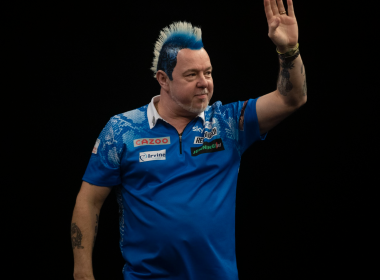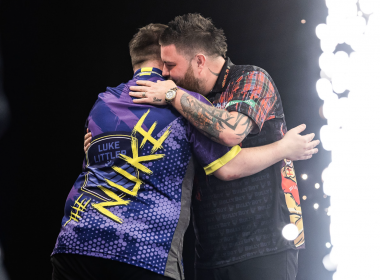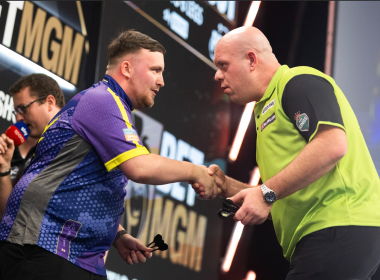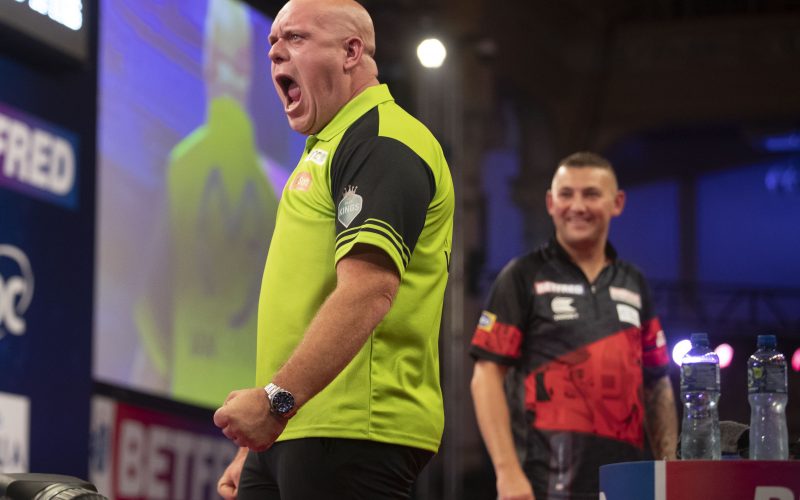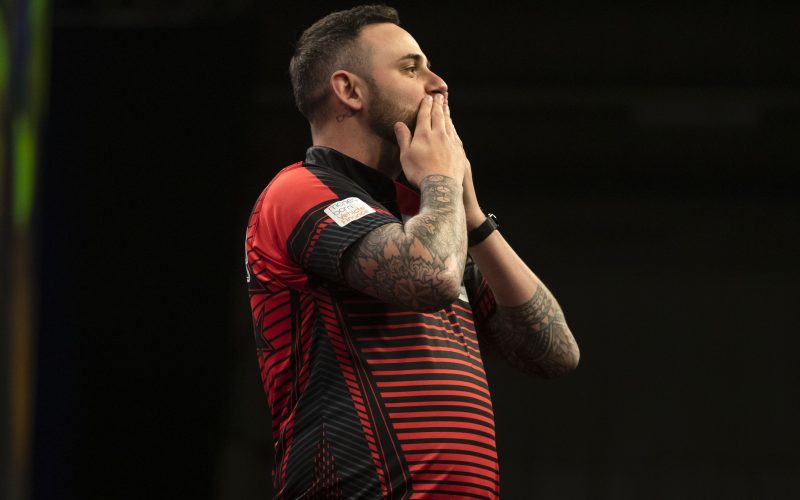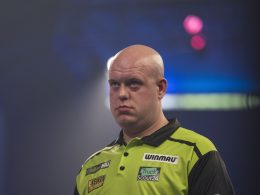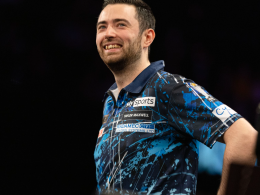Are players playing to their strengths?
When Nathan Aspinall came roaring back at Michael van Gerwen in the World Matchplay quarterfinal last month, van Gerwen killed him off with a beautiful 146 out. When his first dart nestled in the treble 20, there was not a shred of hesitancy in putting another in there to leave double 13, which he promptly nailed. Some players may have preferred to switch to treble 18 with the second dart, in an effort to leave the more likeable double 16 – a thought that never seemed to cross the mind of the three-time World Champ. The lie was possibly so inviting that any player would have been foolish not following it, yet so often we see players move away from the 20 and around the board to set up preferred outer ring targets.
We explored the importance (or not) of staying on treble 20 with two darts in hand at a finish (it is, after all, the most commonly attempted target and therefore should be one that players are more adept at hitting), with the overall question being whether players are playing to their strengths in these crucial moments.
In doing so we looked at the following even-numbered finishes when a player only has two darts in hand: 90, 88, 86, 84, 82, 80, 78, 76, 74, and 72 – all of which have different sequences that professionals follow.

90 is a number for which there is a fairly even spread of routes even with three darts in hand (unlike 86 or 84) so we first took a look at this. The sample included more than 1,600 attempts on the PDC Pro Tour, split into three routes – one starting with treble 18 (19% of the sample), one starting with bullseye (22%) and one starting with treble 20 (59%). By far the most successful of the three is the treble 20 start, which has a success rate that is 6 percentage points higher than the bullseye route and 8 points higher than the treble 18 route. This is unsurprising, given that staying on 20 all but guarantees a dart at either a double or the bullseye, and therefore a player has more margin of error.
Assessing only efforts at 90 when a player has two darts in hand (the sample size is similar – roughly 1,600), the treble 18 sequence becomes predictably more popular (69% of attempts) but is still less successful than treble 20 – albeit by a difference of less than 1 percentage point.
A similar story is evident for 86 – the number van Gerwen was left with after one dart against Aspinall when he decided to stay on the 20. Again, the difference is less than a percentage point but still in favour of throwing for treble 20 (the lie of the first dart would play a part in any decision here). This pattern is in fact repeated on all even numbers from 90 down to 80, in some cases with notably higher differences.
| Finish with 2 in hand | T20 Route Success | Other Route Success (Combined) | Most Successful Route |
| 90 | 15.16% | 14% | T20 |
| 88 | 15% | 13.86% | T20 |
| 86 | 15.11% | 14.88% | T20 |
| 84 | 16.96% | 10.97% | T20 |
| 82 | 13.66% | 9.9% | T20 |
| 80 | 16.23% | 15.2% | T20 |
What is especially interesting about these statistics is that, in the example of 80, they include double/double attempts – now officially the most popular route with two in hand (comprising more than 50% of a sample of 3,000+). Even going tops/tops is less effective than treble 20 followed by double 10. There is a finding related to this that might surprise people – data supports an argument that many players are more accurate on treble 20 than they are on the larger segment of double 20 (and other doubles, for that matter).
The answer to why players can be more accurate on a treble than a double is probably something to do with familiarity with the target, as well as having markers to aim at a lot of the time. We track both treble 20 accuracy (exact for TV and streamed matches and estimated with 99% reliability for floor events), and double 20 (TV and stream only). In 2022 Michael van Gerwen has hit 44.2% of his darts at treble 20 (that’s the best of anybody) and only 42.62% of his darts at double 20. Van Gerwen is no exception either – 87 of the 128 Tour Card holders are above 35% accuracy on treble 20, compared to only 54 who have that level of accuracy on Tops. Admittedly, the double sample is much, much smaller, but the difference is stark. Even Gerwyn Price – possibly the best Tops thrower in the world, is just over 1 percentage point better on that segment than he is on treble 20, throughout 2022.
This data takes on extra significance when you consider the accuracy of players on treble 18 – the common alternative in some of these finishing scenarios. In 2022 only one player in the PDC has greater than 40% accuracy on treble 18 according to our records (this is Andy Boulton), and only 19 in total are higher than 35%. To name some examples: Gerwyn Price, Michael van Gerwen, Nathan Aspinall, Michael Smith and Peter Wright are above 40% accuracy on treble 20 and not one of them is higher than 33% on treble 18.
When we look at numbers in the 70s, a different pattern emerges as the double/double combinations start to become more effective. On 78, the sample sizes are somewhat skewed in favour of starting on treble 18 (78% of almost 1,300 attempts), but still warrant consideration for the overwhelming difference between the percentage of the most and least successful routes. Double 19/double 20 makes up only 79 attempts in the sample but has resulted in a successful finish 28.5% of the time. This compares to 13.19% starting on treble 18 and a close 13.10% starting on treble 20.
On an outshot of 76, treble 20 is still the most popular start with two in hand and is the most successful of the treble routes (there are other treble routes, believe it or not). Comprising 73% of the sample, it has resulted in a player finishing on 14.9% of occasions. This is considerably less successful than the double/double sequence of 36/40 (19.82%) and even less successful than 38/38 (26.5%). Whilst these double/double combinations are a smaller portion of the sample, they still translate to 450 attempts.
| Finish with 2 in hand | T20 Route Success | Other Route Success (Combined) | Most Successful Route |
| 78 | 13.1% | 15.32% | D19 |
| 76 | 14.9% | 16.11% | D18 |
| 74 | 17.24% | 15.5% | T20 |
| 72 | 17.39% | 14.44% | D18 |
74 comes out favourably for a treble 20 start, although we must caveat this with the fact that this sequence makes up less than 3% of the sample. Even on 72 however, treble 20 is a far more reliable way of going than the most popular way, which is starting on treble 16. Once again, both are upstaged by the double/double combination (18s) which makes up 23% of all attempts and has a success rate of 22.7% (compared to 17.39% when starting on treble 20 and 12.56% when starting on treble 16).
The conclusion is clear – when entering double/double territory, this option will nearly always result in the highest probability of winning the leg on that turn. Before double/double becomes a possibility, it is almost universally better to stick with treble 20 unless the bed is obscured. The more interesting question is perhaps whether players should contemplate going for treble 20 first on some of these numbers, even when they have three darts in hand. It is nigh-on impossible to compare success ratios of these approaches using current data, because it so rare for a player to aim for treble 20 with their first dart on 86, for example, if they have three in hand. Nevertheless, the difference in precision on treble 20 compared to other segments has to be worthy of further experimentation across a number of different outshots.
Editorial Staff

